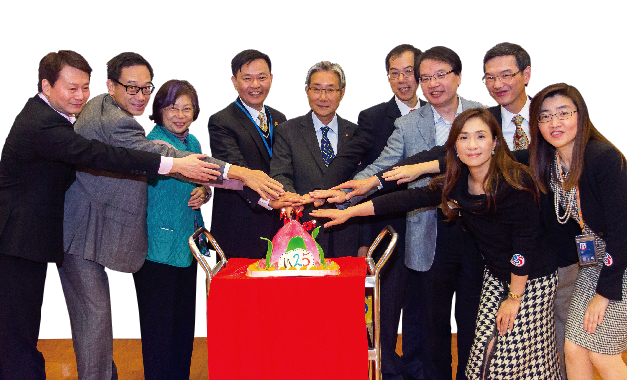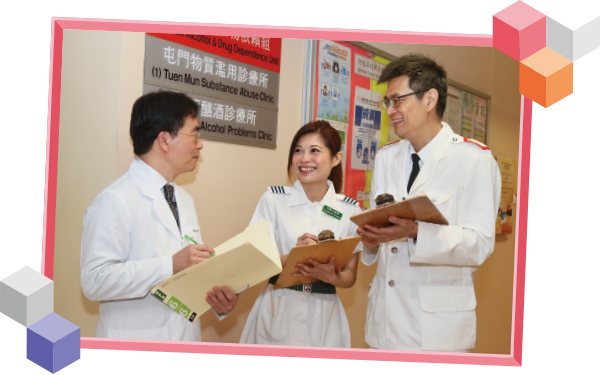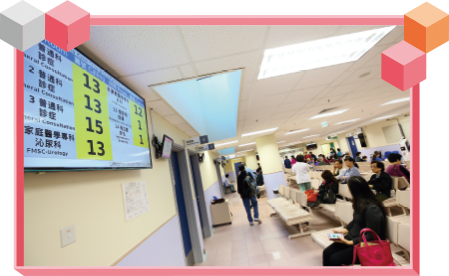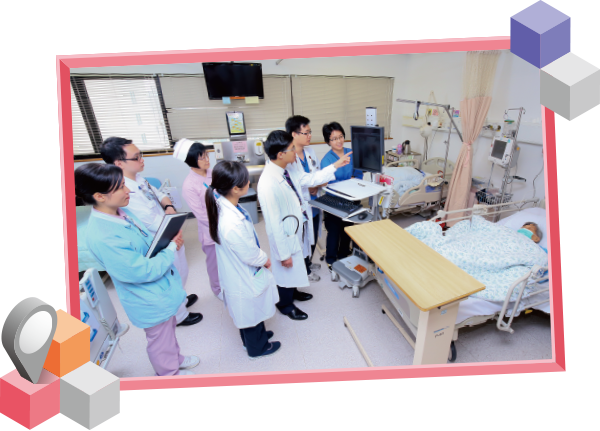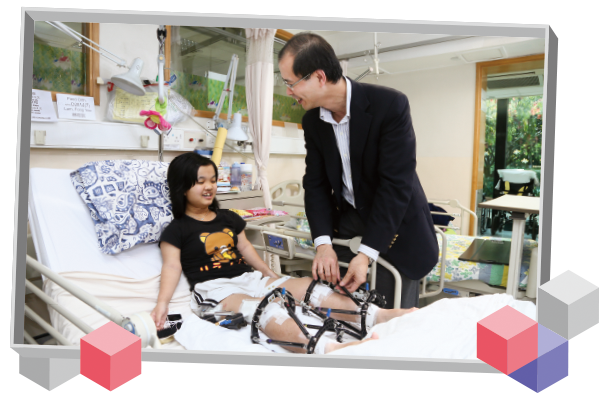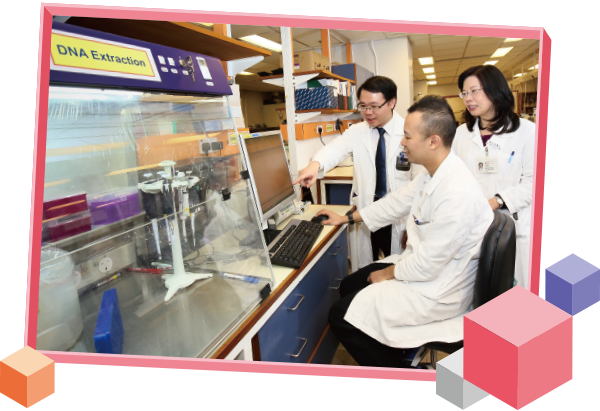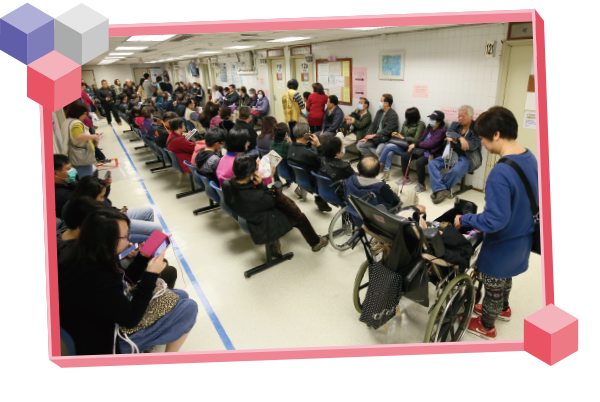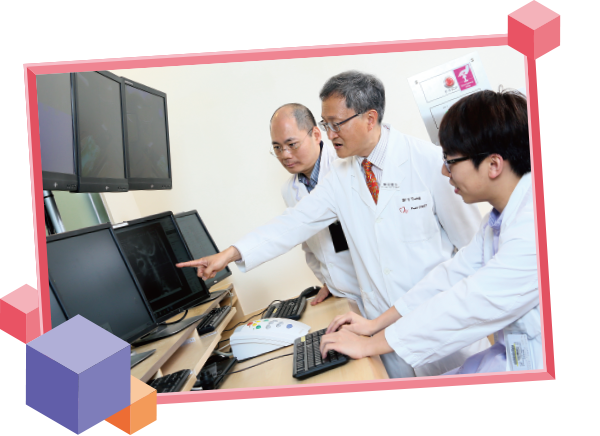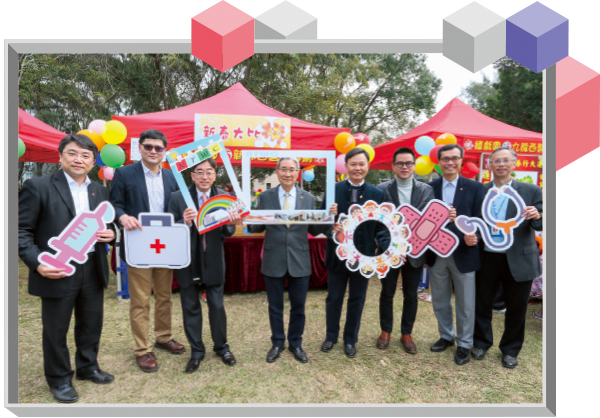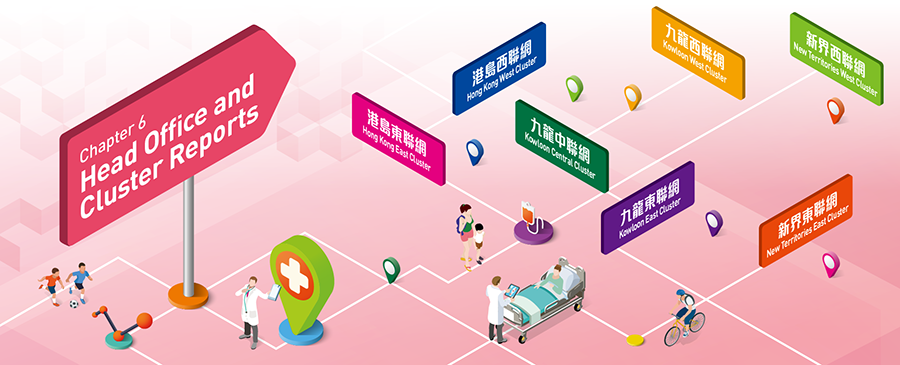
The Hospital Authority (HA) provides public healthcare services to the people of Hong Kong through the Head Office and seven hospital clusters.
Head Office and Cluster Reports present an overview of the performance of HA Head Office and Clusters under six corporate strategic intents and also achievements in contributing to a friendly environment.
Head Office Report
HA Head Office (HAHO) aligns corporate values and directions. It plays a strategic role in leading corporate development and supporting hospital clusters through interactive collaboration of seven divisions, namely Cluster Services, Corporate Services, Finance, Human Resources, Information Technology and Health Informatics, Quality & Safety, and Strategy & Planning. HAHO initiated some 140 corporate targets in 2015-16 under six strategic intents outlined in the HA Annual Plan.
Strategic intent:
Allay staff shortage and high turnover
A series of measures were implemented to help build a working environment that is favourable for attracting, motivating and retaining well-qualified staff. More than 400 doctors, 2,041 nurses and 617 allied health professionals were recruited in the year. As at March 2016, there were 11 non-local doctors working as Service Residents under Limited Registration in HA.
To retain suitable expertise for training and to alleviate manpower shortfall, a Special Retired and Rehire Scheme was implemented in 2015-16 to rehire suitable clinical doctors, nurses, allied health and pharmacy staff and supporting staff retiring in 2015-16 and 2016-17, covering 62 doctors, 48 nurses, nine allied health staff and 884 supporting staff.
Collaboration with the University of Hong Kong, the Chinese University of Hong Kong and the Hong Kong Academy of Medicine on internship training as well as specialist training for doctors of all ranks was strengthened. More than 200 classes of territory-wide simulation training programmes were developed for doctors and nurses in major specialties to enhance career development opportunities and professional capabilities.
We also implemented a wide range of training initiatives to secure healthcare staff supply, and enhance staff competency and morale. The Higher Diploma in Nursing Programme had enrolled 300 students while the Enrolled Nurses Training Programmes had enrolled 100 students. Due to the lack of local training for podiatrists, overseas scholarship was offered to 10 selected podiatrist students for a three-year degree in the United Kingdom. With a view to meeting escalating demand for maternity services in public hospitals, midwifery training programmes were provided with an annual intake of 88 trainees.
Preceptorship programmes were provided for 1,373 registered nurse graduates, and overseas training scholarships were offered to 209 doctors, nurses, allied health and pharmacy staff. There were also training subsidies for healthcare professionals in the service areas that were in line with corporate development priorities to foster career development. Additionally, 68 enrolled nurses were sponsored to undertake the clinical practicum of the Registered Nurse Conversion Programme for Enrolled Nurse.
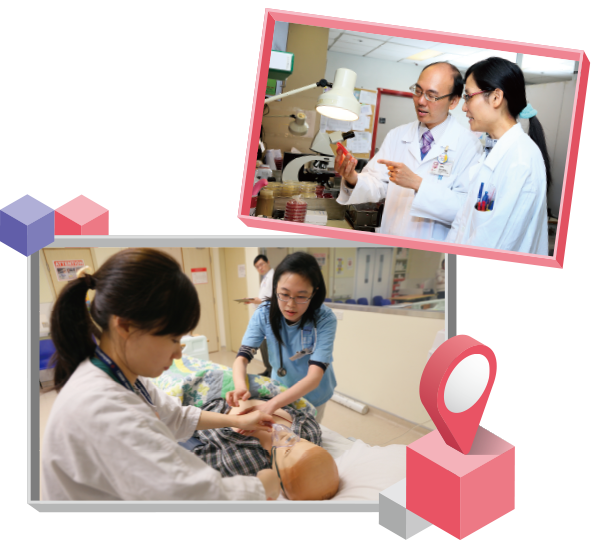
Strategic intent:
Better manage growing service demand
To cater for escalating service demand and reduce waiting time, the Accident and Emergency (A&E) Department Support Session Programme implemented in 12 hospitals since 2013 was extended to all 17 A&E Departments in November 2015 to handle Triage IV (semi-urgent) and Triage V (non-urgent) cases# to relieve pressure in A&E Departments.
The pharmacy workforce was strengthened to meet increasing service demand for outpatient pharmacy services, and improve the service delivery time at specialist outpatient pharmacies. In addition, accessibility to pharmacy services was enhanced with round-the-clock services in North District Hospital, and extension of weekday service by two hours in Shatin Hospital, Our Lady of Maryknoll Hospital and Haven of Hope Hospital.
On top of step-up measures for winter surge to increase 2,000 general outpatient clinic (GOPC) quotas per week, a total of around 4,500 additional GOPC quotas were added during Christmas, Chinese New Year and Easter holidays to meet the strong demand for services. Manpower support was also strengthened by recruiting additional nursing students to assist in wards, part-time doctors and nurses, as well as providing special honorarium scheme for staff who worked overtime during the winter surge period. Appeals were made to the public for rational use of A&E services.
# Patients attending A&E Departments in HA hospitals are divided into five categories (Triage I to V) according to medical condition, namely critical, emergency, urgent, semi-urgent and non-urgent cases.
Initiatives were implemented to enhance service of various specialties. In acute stroke services, Princess Margaret Hospital and Tuen Mun Hospital started the provision of 24-hour thrombolytic acute stroke service to improve the coverage for indicated acute stroke patients. To enhance the quality of service for patients with Transient Ischaemic Attack (TIA), the TIA clinic programme was implemented in New Territories West Cluster. On the front of renal services, the provision of haemodialysis (HD) service was expanded to additional 20 patients in hospitals and 30 patients under Nocturnal Home Haemodialysis Programme. Automated peritoneal dialysis was also provided to 30 more patients. Service capacity of colonoscopy was increased by 2,700 colonoscopy procedures provided across clusters.
In the area of mental health, a total of five peer support workers with experience of mental illness were recruited in Kowloon Central Cluster, Kowloon West Cluster and New Territories West Cluster to further enhance community support for patients with severe mental illness. To strengthen the multi-disciplinary team support for patients with common mental disorder, 1,485 additional specialist outpatient clinic (SOPC) new case attendances were provided in Kowloon West Cluster. Child and adolescent psychiatric outpatient services were enhanced to curtail SOPC waiting time of new cases. Kowloon East Cluster provided 200 additional new case consultations to enhance child and adolescent psychiatric outpatient services.
The capacity of Extracorporeal Membrane Oxygenation service in Pamela Youde Nethersole Eastern Hospital, Queen Mary Hospital, Queen Elizabeth Hospital, Princess Margaret Hospital and Prince of Wales Hospital was increased to meet growing demand for the service.
New Territories East Cluster set up a joint replacement centre for performing 90 additional operations. TWGHs Wong Tai Sin Hospital provided six designated beds to support chronic ventilator-dependent patients. Multi-disciplinary care for Human Immunodeficiency Virus new cases and Highly Active Antiretroviral Therapy to eligible patients was provided in Queen Elizabeth Hospital and Princess Margaret Hospital.
Public-Private Partnership (PPP) in healthcare services not only fosters co-operation among healthcare services providers, but also helps shorten the waiting time for public healthcare services, and thus optimising the use of healthcare resources in both public and private sectors. The HD PPP programme continued and provided 188 patient capacities. The pilot PPP programmes of cataract surgeries, primary care service and radiological investigation service were implemented, benefitting over 6,500 patients. The GOPC PPP programme launched in Kwun Tong, Wong Tai Sin and Tuen Mun districts also benefitted over 7,000 patients. An interim review was conducted to monitor the implementation of the GOPC PPP programme to prepare for further extension to other districts.
To better manage growing service demand, a ten-year capital plan was formulated to meet future service needs through new development, redevelopment and expansion projects of 12 hospitals, including phase one development of a new acute hospital at the Kai Tak Development Area. HK$200 billion was earmarked by the Government for implementing the capital works projects in the plan in the next ten years, through which a total of around 5,000 additional beds and over 90 new operating theatres would be provided. The plan also includes the development of three new Community Health Centres in North District, Shek Kip Mei and Mong Kok.
Strategic intent:
Ensure service quality and safety
HA made continuous effort in building safety culture and developing safer service models. Queen Mary Hospital, Yan Chai Hospital and Queen Elizabeth Hospital had completed construction work for their centralised Theatre Sterilisation Service Units. The electronic Surgical Instrument Tracking and Tracing System was further rolled out to another six hospitals, namely Yan Chai Hospital, Kwong Wah Hospital, Our Lady of Maryknoll Hospital, Grantham Hospital, Ruttonjee Hospital and Hong Kong Eye Hospital. We also continued to phase out the reuse of single use devices according to clinical prioritisation.
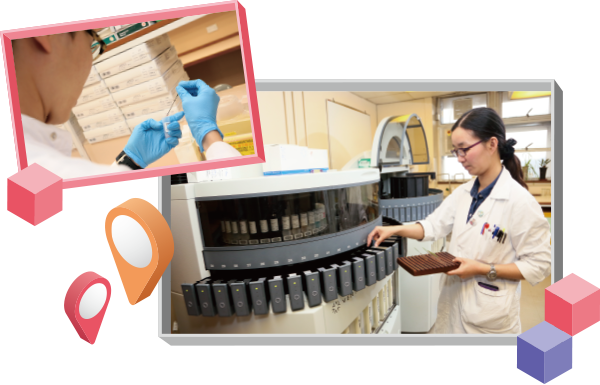
To improve quality of drugs, HA provided additional recurrent funding to widen the scope of HA Drug Formulary. Self-financed drugs including five classes of drugs for cancer treatment, chronic hepatitis C and Crohn’s disease were repositioned as special drugs in the Drug Formulary, while the clinical application of a special drug was expanded for treatment of multiple sclerosis.
Around 1,900 additional molecular tests for patients with lung, breast, colorectal and blood cancers, and around 2,590 additional laboratory tests through adopting Mass Spectrometry Serum IGF-I were provided to ensure a stable diagnostic service for patients with growth hormone abnormalities. Minimally Invasive Surgery (MIS) in 80% of the hysterectomy surgeries was conducted for suitable gynaecological patients. MIS suites were set up in Princess Margaret Hospital and Our Lady of Maryknoll Hospital with improved facilities. Pamela Youde Nethersole Eastern Hospital, Queen Elizabeth Hospital, Kwong Wah Hospital and Tuen Mun Hospital installed Matrix Assisted Laser Desorption Ionisation Time of Flight (MALDI-TOF) Mass Spectrometry to speed up microbiological identification.
HA has been collaborating with the tripartite Chinese Medicine Centres for Training and Research to implement the Chinese-Western Medicine Pilot Programme in two phases. Upon completion of the interim review, phase two programme commenced in December 2015 with services expanded to Prince of Wales Hospital, Shatin Hospital, Kwong Wah Hospital and Princess Margaret Hospital. For the introduction of Chinese Medicine treatment in inpatient setting, other Chinese Medicine treatment modalities were explored to fulfil the clinical needs based on scientific evidence. For example, vacuum cupping, Tui-na and Chinese medications were added in the clinical protocol of acute low back pain care on top of acupuncture treatment.
With funding support from the Government and designated fund of HA, about 1,300 pieces of medical equipment items were installed for addition or replacement. Besides, new maintenance contracts were established in order to align the service level of maintenance for approximately 15,000 pieces of high risk medical equipment in HA hospitals.
To enhance clinical governance, HA identified and prioritised procedures for credentialing at corporate level and developed credentialing requirements in collaboration with Coordinating Committees, Central Committees and professional bodies. We also set up designated accreditation teams to prepare for hospital accreditation programme in 10 hospitals for continuous quality improvement. Human capital on genetic and genomic analysis will be built up through knowledge and skill transfer from academia to HA.
Strategic intent:
Enhance partnership with patients and community
HA has fostered close partnership with patients and community in the delivery of patient-centred service. The implementation of the Patient Empowerment Programme (PEP) with non-governmental organisations continued to provide chronic disease patients with disease specific education and self-care skills, benefiting 14,000 patients. The service model of PEP was reviewed and enhanced with more personalised service.
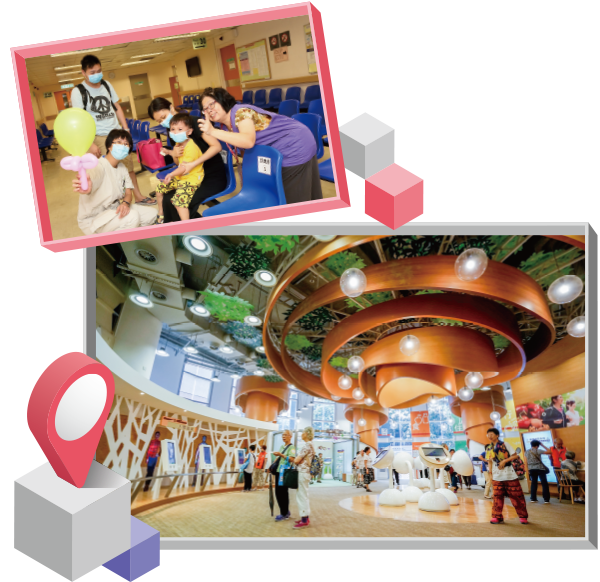
The initiative on SOPC Phone Enquiry System, first piloted in Kowloon Central Cluster, was extended to another six clusters in 2015-16. The system facilitates the public in making enquiries about SOPC services and in canceling or rescheduling their appointments, and thus improves communication with patients and carers. Encouraging results of the Patient Experience and Satisfaction Survey (the Survey) on Specialist Outpatient Service was announced last year, and with the findings of the Survey, HA can better understand the needs and expectations of patients for quality improvement.
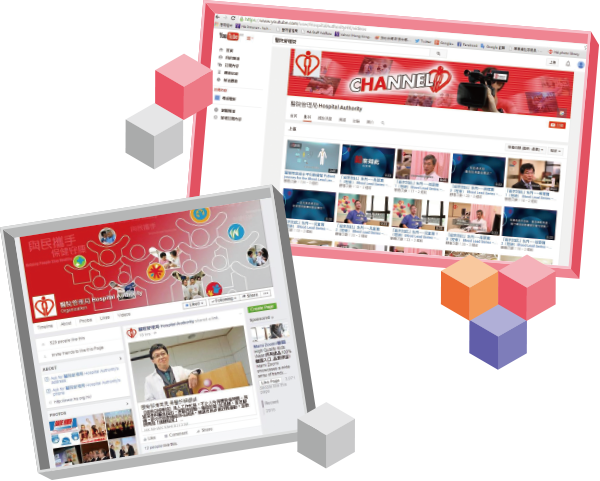
Roving exhibitions were organised in the clusters to introduce the roles of Patient Resource Centres to patients, staff and the general public. We also reviewed and formulated a new plan for Patient Partnership in Action (PPIA) training programme, and started the new batch of PPIA in 2015-16 to train up patient leaders. Moreover, the content of the Smart Patient Website was enhanced with the launch of the “Smart Elders” module.
To strengthen interaction with the public, various electronic platforms are adopted for information dissemination and engaging the public. In addition to the corporate website, HA Facebook page and YouTube Channel were launched to provide information on public hospital and healthcare services. A total of 27 videos were published on HA YouTube Channel, and 316 posts were made on HA Facebook page last year.
A proactive approach is adopted to maintain rapport and communicate with the media and community stakeholders to keep them abreast of the latest development in HA policies and services. During the year, 228 media activities were organised, 464 press releases issued and 340 articles contributed to various media platforms. 2,200 media enquiries and 208 community enquiries were handled. 24 meetings with Legislative Councillors and community stakeholders were arranged or attended. 41 District Council meetings and related activities were handled.
Strategic intent:
Ensure adequate resources for meeting service needs
The Government continued its support for local public healthcare with subvention to HA reaching HK$52 billion in 2015-16. HA would continue to adopt prudent financial measures to ensure public resources are properly and efficiently used.
Through the annual planning exercise, resource requirement of individual clusters was identified and considered against the total amount of resources available to HA, targeting at maintaining existing levels of services, training Hong Kong’s healthcare workforce by recruiting new graduates, and providing pragmatic service growth in meeting the pressing demand for public hospital services. Measures to improve service quality and efficiency were also explored. To facilitate the delivery of value-for-money services, HA regularly monitors service output, performance and resources with a set of performance indicators.
HA recorded a close-to-balance financial position in 2015-16. The Government has granted additional funding during 2015-16 to 2017-18 for HA to re-employ serving employees beyond the age of 60 to increase workforce. It is anticipated that the ageing population in Hong Kong will bring further growth in service demand and impose greater financial pressure on HA. To ensure long-term financial sustainability, HA will continue to discuss its financial requirements for the coming years with the Government.
HA continued to leverage technology to improve service efficiency and enhance medical safety. Advanced digital imaging technology was deployed to operating theatres of major hospitals to improve surgical services. The implementation of the Inpatient Medication Order Entry system in United Christian Hospital, Ruttonjee Hospital and Yan Chai Hospital in 2015-16 further reduced the risk of prescription errors.
In view of widening use of mobile technology, the mobile network infrastructure in HA hospitals was upgraded for better coverage and stability. More mobile applications have been developed for staff and public use, including BookHA which enables patients to submit applications for booking new case appointments in Gynecology as a pilot and will be further introduced to other specialties.
The Enterprise Resource Planning Asset Management System has been successfully implemented throughout HA hospitals for IT assets and will be extended to incorporate medical equipment. HA adopted improved quality assurance controls to strengthen the consistency of IT systems application development and continued to apply established risk management processes to enhance IT system availability, performance and accuracy of data.

IT infrastructure and systems will be implemented in new hospitals and hospital blocks, including Tin Shui Wai Hospital, to pave the way for HA’s hospital development and service operation plan.
Protecting patient data privacy is of prime importance in HA. We are committed to promoting and strengthening privacy protection, identifying emerging privacy risks and responding to incidents swiftly. Continuous efforts were invested in personal data protection education and training programme for all staff, internal privacy compliance checks, forums and walkrounds for heightening staff awareness in patient privacy protection. HA also participated in the Privacy Management Programme led by the Privacy Commissioner for Personal Data, adopting the same in business practices, technical infrastructure and operational processes in its clusters, hospitals and clinics.
The Hong Kong Government’s eHealth Record Sharing System, in which HA serves as a technical agency, was launched in March 2016. HA also continued to provide technical services to the Department of Health for the Elderly Healthcare Voucher Scheme, Vaccination Subsidy Schemes, Primary Care Directory System, Communicable Disease Information System, Laboratory Information System and Colorectal Cancer Screening Programme System.
Strategic intent:
Enhance corporate governance
Sustained efforts were made by the HA Board to continue with a spectrum of enhanced practices on corporate governance structure and processes validated in the previous corporate governance review. Against a robust governance and accountability framework, the Code of Corporate Governance Practices guides members of the Board and its committees in performing their roles and responsibilities at the Board level. In 2015-16, a familiarisation programme in the form of sharing sessions and visits to corporates was implemented, keeping members abreast of the knowledge and skills applicable to public sector operations and the changing environment.
Proactive initiatives were also introduced to enhance engagement and strengthen role of Hospital Governing Committees (HGCs) members in corporate policies and strategies. The Manual on the Operation of Hospital Governing Committees, encompassing various corporate governance policies and practices adopted by the HA Board and HGCs over the years, provides guidance to HGC members in discharging their responsibilities. Striving for further enhancements, agenda setting and self-assessment exercise of HGCs were revisited and enhanced.
Contributing to a Green Environment
HA recognises the need to support environmental conservation and has been making sustained effort in implementing various energy conservation and waste reduction initiatives over the years.
To reduce energy consumption, HA took specific step to gradually replace aged air-cooled air-conditioning chillers in various hospitals and institutions with energy-efficient oil-free air-cooled chillers starting from 2015-16.
HA also developed a comprehensive energy saving checklist to facilitate systematic assessment and incorporation of energy efficient measures in capital works projects in new hospital developments as well as existing hospitals. These measures can reduce carbon emission and offset the rising trend of energy consumption due to increasing hospital activities. In 2015-16, 19 public hospitals and institutions met the carbon emission reduction standard of the Hong Kong Awards for Environmental Excellence scheme and were awarded Carbon Reduction Certificates.
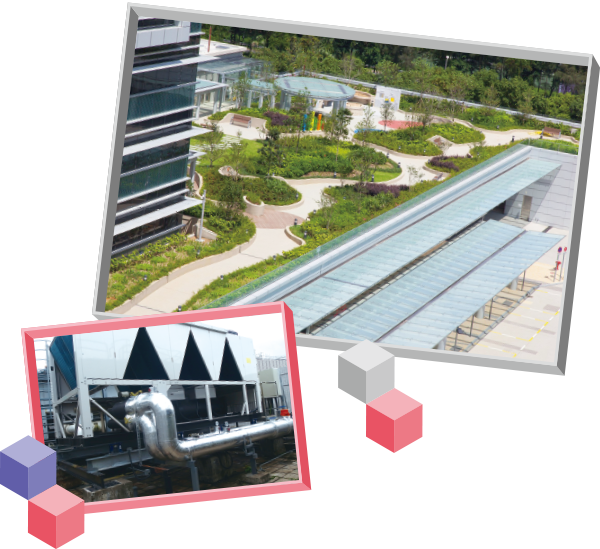
Various waste reduction and recycling programmes continued in hospitals. Over 3,600 tonnes of recyclables including waste paper, plastic, metals, glass bottles, food waste and used clothes were collected. 21 hospitals achieved the Certificate of Appreciation for Used Clothes Recycling Programme from Friends of the Earth, and 29 hospitals and institutions including HA Head Office, were awarded the Class of Excellence Wastewi$e Label of the Hong Kong Awards for Environmental Excellence in 2015. Food waste reduction programmes such as promotion of waste reduction at source and adoption of low carbon menu continued. Last but not least, 19 hospitals have environmentally friendly food waste decomposers implemented or participated in various food recycling programmes to further minimise food waste disposal.

